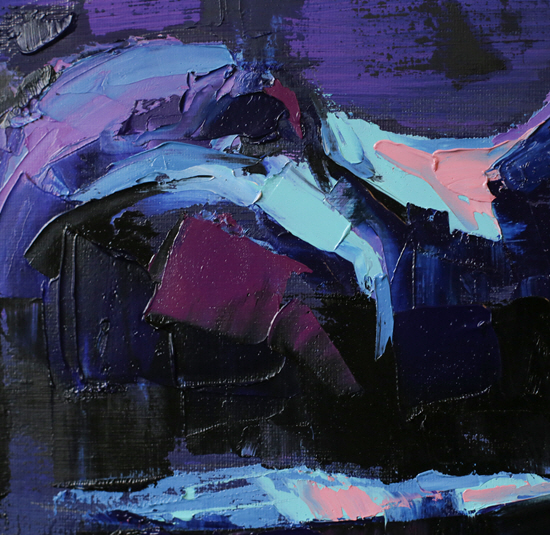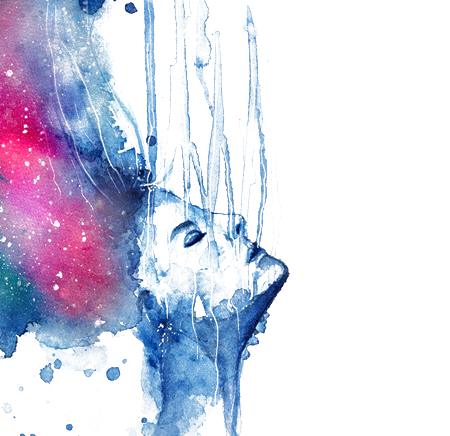 An inner shape-shifting dragon…
An inner shape-shifting dragon…
… that can grab you when you least expect it. That’s what living with trauma can feel like.
A noise, a color, a person, a song, a smell… anything can trigger the scary beast and throw us into a flurry of symptoms that can leave us perplexed and confused…
Sensing danger that doesn’t go away…
Feeling trapped and hopeless with no way out…
Enduring soul-piercing feelings that are almost too difficult to tolerate…
Repetitive images in our minds disturb and squeeze us with a violent edge.
Gripped by tightness and fear…
Trauma affects how we perceive ourselves.
It distorts our experience of ourselves, making us believe that we are broken. That something is wrong with us, that we are deficient.
We then disconnect from our bodies and our life. Alienating us from ourselves and others.
We may end up living in a constant state of fear and defensiveness, in a state of disconnection and lethargy, or back and forth between the two states.
Trauma affects how we perceive others.
Depending on the nature of trauma, we can end up not trusting others. We interpret their actions and movements as a threat, making it very difficult to be emotionally intimate with others. Conversely, we can became overly trusting, and we find ourselves again and again in situations where we end up getting abused or taken advantage of.
Trauma affects how we perceive the world.
Similarly, here our sense of the world can become distorted, and we experience the world as out to get us. We experience it as a dangerous place, making it difficult for us to relax and feel at ease.
Or we are so disconnected from reality that we are constantly putting ourselves in danger. It’s like our ability to assess what is going on out in the world is impaired.
 So, what is trauma?
So, what is trauma?
Basically, trauma occurs when a person is overwhelmed by an experience or repeated experiences. The experience itself is not the trauma; rather it is the internal response to it.
There are two kinds of trauma: Shock trauma, which represents a single event such as an accident or an attack; and complex trauma, which represents repeated events such as growing up in an abusive family environment.
People with trauma tend to disconnect from their bodies as a way to get away from the difficult internal states they experience. This creates all sorts of problems in their lives that include anxiety, depression, substance abuse, and other addictive behaviors – intrusive thoughts, flashbacks, dissociation, disorganization, and a tendency to avoid situations that may trigger the traumatic responses.
Trauma is fragmentation. Different aspects of who we are separate, and there is no cohesion between them. For example, imagine a young person who was abused by their parents whenever they expressed anger. So now as an adult, every time they experience anger, they might deny it to themselves and repress it. This creates all kinds of problems for obvious reasons. Not to mention that anger then tends to turn inward.
Trauma is enmeshment. Trauma fuses together things that do not belong together. For example, people who experience a great deal of abuse as young individuals may, as adults, find themselves in romantic relationships that are abusive. Their experience of receiving love is fused with abusive behavior.
We find ourselves doing all sorts of things because of trauma.
Wanting to “numb out” with drugs, food, or shopping – anything to not feel that agonizing squeeze in the heart…
Running wild with impulsive intensity that lead to reckless behaviors…
There’s often no middle ground, because it feels nearly impossible to find balance. There’s always some kind of drama going on.
It’s a self-loathing cycle: Explosions of intensity followed by disconnection and numbing out.
 Yes, it can be a living hell… but there is a way out.
Yes, it can be a living hell… but there is a way out.
It’s not easy, my friends… but it is possible. And there’s no one approach that will do it. Instead, we must find out what will work for us. Here are some key ingredients to how we’ll approach it in therapy:
Safety
I note this first because it’s of utmost importance.
We can say that a staple of trauma is a perpetual sense of unsafety. Our nervous system is on alert, and there is an inability to rest or be at ease, even when there is no actual danger in the immediate environment.
The first thing that I emphasize during therapy is establishing that sense of safety. To do that I am constantly tracking how you respond to my interventions and will adjust accordingly.
I am also as open as I can be, bringing forth a caring and soft quality of presence. When appropriate, I will also teach you techniques to soothe your nervous system. These techniques will often bypass the thinking mind and will instead focus on regulating your nervous system.
Such techniques include using the visual channel to scan the environment and recognize an immediate sense of safety. This technique is telling the fear center of the brain that it isafe in the moment, thus activating a relaxation response. Or using deep, long breaths to down-regulate anxiety. There are many such techniques, and we explore them in therapy.
Resources
If we work together, I will help you find resources (internal and external) that will help you feel safe enough to do the real work of understanding, confronting, and overcoming trauma.
We are all different, so different things work for each of us; it’s important to find what will work for your nervous system. In therapy, I will help you discern what resources might be right for you.
Here are some example of resources…
Perhaps it’s connecting with nature.
This one can be huge. Nature can be an amazing way of connecting with something larger than our trauma. If we let ourselves slow down and feel the space and support of nature, we may find a deep source of support.
It might be finding a sense of solidity in our bodies.
Yoga and movement can be very helpful. They can help us find inner solidity and stability in our bodies. We can also practice grounding exercises like paying attention to our feet or our buttocks making contact with the ground or place we are sitting.
Visualization and imagery can also be very supportive…
Using imagery and visualizations can be a great support to reinforce positive neural connections. We can imagine positive scenarios that help us counteract the traumatic reactions.
Connection with others. Things like support groups …
Yes. When we are traumatized, our ability to connect with others can be greatly compromised. Finding a support group can be a great way to help us feel safe in the presence of others.
The Body
We could say that the trauma is stored in the body, so getting in touch with our bodies is imperative.
When we live with trauma, our bodies don’t feel safe. So, bit by bit we must find the little places of safety as we learn to inhabit the body. This is a process that can take some time.
One of my favorite questions in therapy is, “How does that feel in your body?” or “How does that impact your body?”
I will constantly direct you back to your body to investigate your experience of it. Tracking body sensations, naming them, and noticing the connection between sensations and feelings and thoughts are just a few of the ways we will explore your body/mind connection.
There is a fundamental principle of somatic therapy, and it serves several purposes once it starts to establish a sense of safety in the body. The more we explore the body and find resources within it, our nervous system, little by little, begins to trust that it’s ok to inhabit our bodies.
After doing this kind of work for some time, what used to be overwhelming begins to feel lighter and thinner. Yes, thinner. It’s like the imprints from the past begin to thin out and became more transparent and less impactful in our lives. Also, the more we have a language for what is going on inside ourselves, the easier it is for us to be with it.
Mindfulness/Presence
These days we hear the term mindfulness everywhere. It is in vogue, but what is it actually? In a nutshell, mindfulness is an open, nonjudgmental awareness of whatever is occurring in the present moment.
It is observing our experience directly without extra baggage. I like to use the term presence, because it carries more fullness and body in it, but I basically use them interchangeably.
During therapy, we will focus a great deal in developing the ability to observe your experience without judgment. Being aware of the difficult material from a spacious stance and at the same time being able to touch it with awareness is essential for healing to happen. As we develop the skills of mindfulness, we can feel the feelings related to the traumatic event, see the intrusive thoughts, and feel the body sensations without getting overwhelmed by them.
Integration
One of the purposes of trauma therapy is integration. Once we find safety, we become more comfortable in our bodies; and we have developed the ability to explore difficult emotions, thoughts, and feelings without getting overwhelmed by them. Then, we begin the integration part of the work.
We begin to bring together different aspects of ourselves that were split from each other. For example, we can begin to feel a sense of congruence between our thoughts, our feelings, and our actions. This is a simple way this integration process shows up. There is a lot more to integration, but this should be enough for now.
Suffice to say this is not a fast process. It takes time, and it must be done slowly.
 Ever heard of “titration”?
Ever heard of “titration”?
It’s how we’ll get into your story.
Very slowly and at your nervous system’s pace, we venture into the difficult traumatic material. In other words, as we build the capacity to not be overwhelmed by the material, we begin confronting it, talking about what happened. Feeling the feelings associated with it. Feeling the body sensations, the fear, the images, and thoughts associated with it.
Did I say, “very slowly”? Yes… VERY slowly.
This might feel counterintuitive to the traumatized nervous system that tends to speed up as the traumatic material shows up.
In his book Waking the Tiger, Peter Levine explains to us that in chemistry, “titration” refers to mixing two potentially reactive compounds. Bit by bit. Drop by drop. If you mixed them all at once, you would probably end up with an explosion in the chemistry lab. But if you properly put one drop from one container to the other, you get a bit of a fizzle and that’s it. At the end, you have a new compound and no explosion.
Trauma is the same way: If you go at it trying to tell your story and go into the feelings fast and aggressively, you’ll most likely end up re-traumatizing the system or feeling completely overwhelmed by the experience.
Together, using this principle of titration, we’ll feel the energy, observe the images, touch the pain, and bring in kindness – lots and lots of kindness.
This is a courageous process. Yes, lots of bravery is needed to do this work.
Are you ready to take charge of your life?
I know you have the courage to do this. And, if you do, that massive dragon may begin to look more like a lizard, and you can regain your energy to live a full life.
Put an end to being intimidated by the past!
Reach out to me, and let’s schedule a 30-minute zoom consultation: (415) 891-9562.


